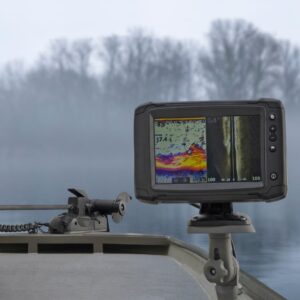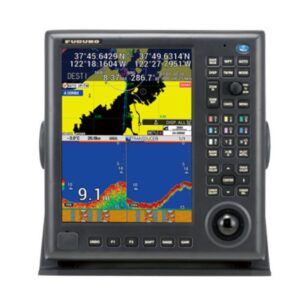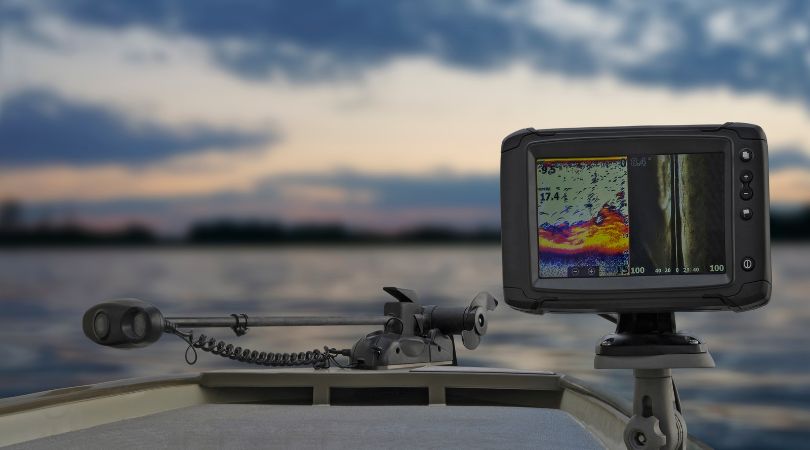Whether you are an avid angler or a weekend fishing enthusiast, having a reliable fish finder can greatly enhance your fishing experience. A fish finder, also known as a depth sounder or sonar device, uses sound waves to locate fish underwater, helping you to identify the most productive fishing spots. With the multitude of options available in the market, finding the best fish finders for small boats can be a daunting task that’s why we compile some essential factors to consider when selecting the perfect fish finder to help you find your needs.
1) Transducer Type and Frequency:
 The transducer is the heart of a fish finder. It emits sound waves and receives echoes to generate a visual representation of the underwater environment. When choosing a fish finder, consider the transducer type and frequency. There are two main transducer types: single-beam and dual-beam. Single-beam transducers emit a narrow cone-shaped beam, while dual-beam transducers emit both narrow and wide beams. Dual-beam transducers are generally more versatile and provide better fish detection capabilities. Additionally, consider the frequency range of the fish finder. Lower frequencies, such as 50 kHz, are better suited for deep-water fishing, while higher frequencies, such as 200 kHz, offer greater detail in shallow water.
The transducer is the heart of a fish finder. It emits sound waves and receives echoes to generate a visual representation of the underwater environment. When choosing a fish finder, consider the transducer type and frequency. There are two main transducer types: single-beam and dual-beam. Single-beam transducers emit a narrow cone-shaped beam, while dual-beam transducers emit both narrow and wide beams. Dual-beam transducers are generally more versatile and provide better fish detection capabilities. Additionally, consider the frequency range of the fish finder. Lower frequencies, such as 50 kHz, are better suited for deep-water fishing, while higher frequencies, such as 200 kHz, offer greater detail in shallow water.
2) Display Quality and Size:
The display is another crucial aspect to consider when selecting a fish finder. Look for a display with high resolution and excellent color reproduction, as this will provide clear and detailed images. A larger display size is generally preferable, as it allows for better visibility, especially in bright sunlight or rough conditions. Consider factors such as screen brightness, contrast, and viewing angles to ensure optimal readability under various conditions. Some advanced fish finders even offer touchscreen displays, which can provide a more intuitive user experience.
3) GPS and Mapping Capabilities:
 Integrated GPS and mapping capabilities can greatly enhance your fishing experience. GPS functionality allows you to mark and navigate to specific fishing spots, making it easier to return to successful locations. Look for a fish finder that offers accurate and reliable GPS features, including waypoint marking and route planning. Additionally, consider a fish finder that supports detailed mapping. High-quality maps can provide valuable information about underwater contours, structures, and potential fish-holding areas, giving you a competitive edge on the water.
Integrated GPS and mapping capabilities can greatly enhance your fishing experience. GPS functionality allows you to mark and navigate to specific fishing spots, making it easier to return to successful locations. Look for a fish finder that offers accurate and reliable GPS features, including waypoint marking and route planning. Additionally, consider a fish finder that supports detailed mapping. High-quality maps can provide valuable information about underwater contours, structures, and potential fish-holding areas, giving you a competitive edge on the water.
4) Power and Depth Capability:
Consider the power and depth capability of the fish finder, particularly if you plan to fish in deep waters. A higher power output enables the fish finder to penetrate deeper depths and provide clearer images. It is essential to match the power output with your fishing environment. If you frequently fish in shallow waters, a lower-powered fish finder may suffice. However, if you venture into deeper waters, opt for a fish finder with higher power and depth capabilities to ensure accurate readings.
5) Additional Features:
Lastly, consider any additional features that may enhance your fishing experience. Some fish finders offer advanced technologies such as CHIRP sonar, which provides improved target separation and better image clarity. Other features to look out for include fish alarms, temperature sensors, and the ability to connect to mobile devices for data sharing. Consider your fishing style and preferences to determine which additional features would be most beneficial to you.
Choosing the best fish finder involves evaluating various factors such as transducer type, display quality, GPS capabilities, power and depth capability, and additional features. By carefully considering these factors and matching them to your specific fishing needs, you can select a fish finder that will significantly improve your fishing success and enjoyment on the water.
